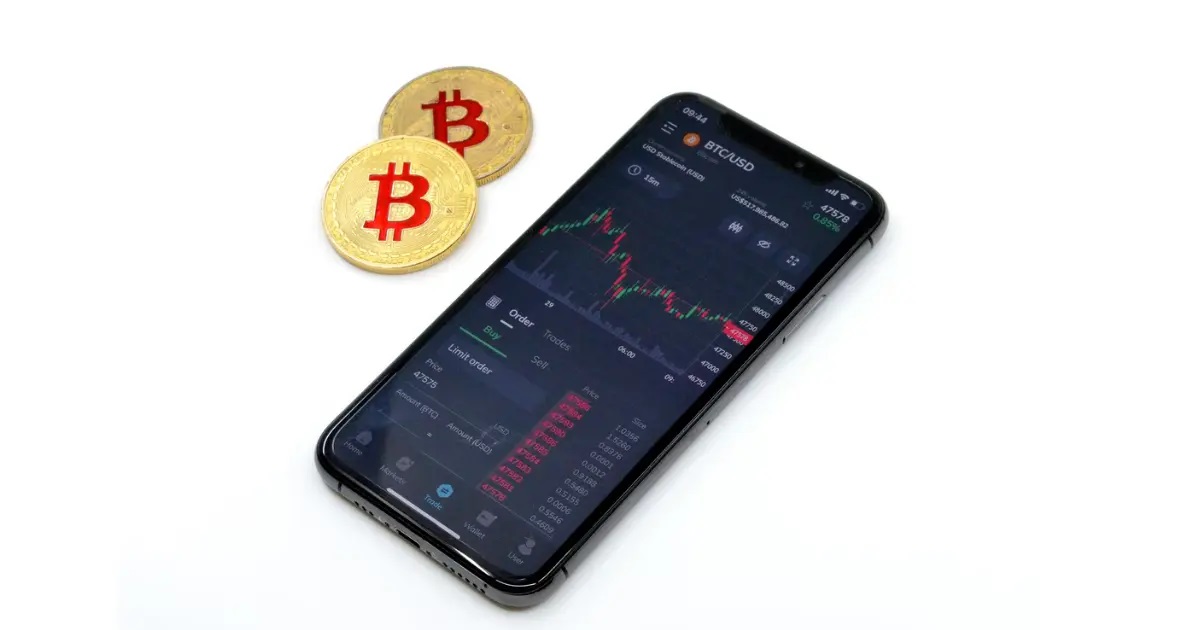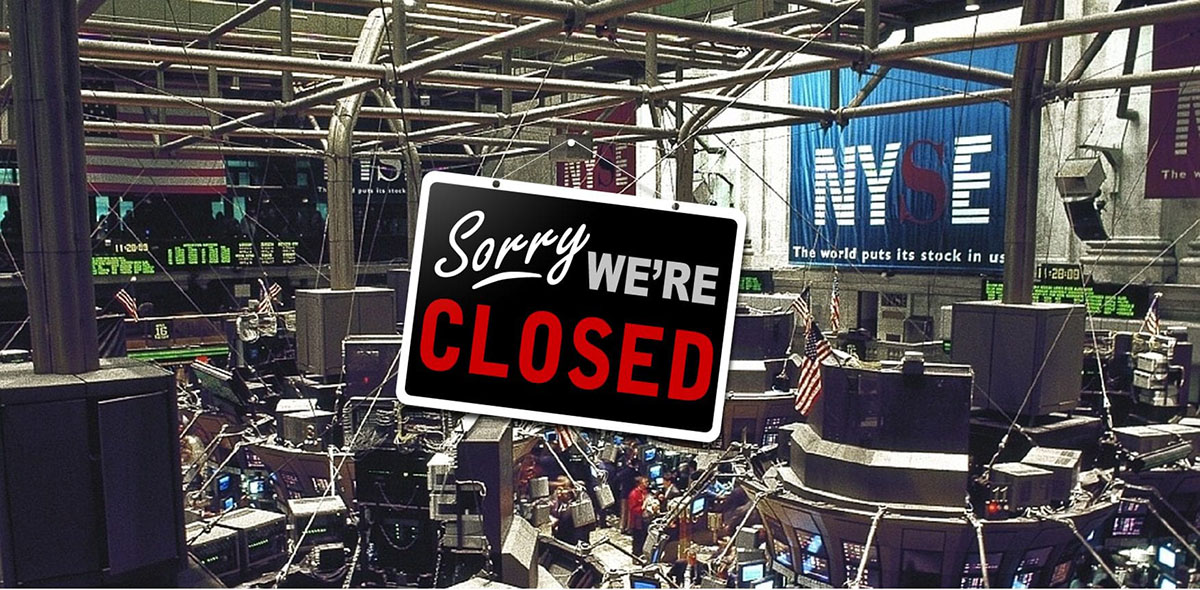

Finance
What Time Does The Cryptocurrency Market Close
Published: October 5, 2023
Discover the closing time of the cryptocurrency market and stay updated with the latest trends in finance. Plan your investments strategically with this valuable information.
(Many of the links in this article redirect to a specific reviewed product. Your purchase of these products through affiliate links helps to generate commission for LiveWell, at no extra cost. Learn more)
Table of Contents
- Introduction
- Understanding the Cryptocurrency Market
- Trading Hours of the Cryptocurrency Market
- Factors Influencing the Closing Time of the Cryptocurrency Market
- Popular Cryptocurrency Exchanges and Their Closing Times
- The Importance of Knowing the Market Closing Time
- Trading Strategies Based on the Market Closing Time
- Conclusion
Introduction
Welcome to the world of cryptocurrencies, where digital assets have revolutionized the way we perceive and transact with money. The cryptocurrency market, driven by blockchain technology, has gained immense popularity and become a lucrative avenue for investors and traders alike. As with any financial market, it is essential to understand the trading hours and market schedule to make informed investment decisions.
In this article, we will delve into the closing time of the cryptocurrency market, exploring its significance, trading strategies based on the closing time, and the factors that influence this important market event. Whether you are a seasoned trader or a novice investor hoping to embark on your cryptocurrency journey, understanding the market’s closing time is paramount to making successful trades and managing your portfolio.
While traditional financial markets are bound by opening and closing hours, the cryptocurrency market operates 24/7, providing endless trading opportunities around the clock. However, this does not mean that the market remains unchanged throughout the day. Just like any market, there are periods of high activity and volatility, as well as relatively quiet periods.
By knowing the closing time of the cryptocurrency market, you can better align your trading strategies and capitalize on potential price movements. Furthermore, understanding the closing time is crucial for risk management, as it allows you to evaluate your positions and make necessary adjustments before the market closes.
In the following sections, we will delve deeper into the trading hours of the cryptocurrency market and analyze the factors that influence its closing time. Additionally, we will explore popular cryptocurrency exchanges and their respective closing times. So, let’s get started and unlock the secrets behind the closing time of the cryptocurrency market!
Understanding the Cryptocurrency Market
The cryptocurrency market, often referred to as the digital currency market or crypto market, is a decentralized financial market where various digital assets, known as cryptocurrencies, are traded. It is a global market that operates 24/7, allowing users from around the world to buy, sell, and trade cryptocurrencies at any time of day or night.
At its core, the cryptocurrency market is powered by blockchain technology. Blockchain is a distributed ledger system that records every transaction made with a cryptocurrency. This technology ensures transparency and security, as every transaction is verified by a network of computers known as nodes.
Unlike traditional financial markets, the cryptocurrency market is not governed by a central authority, such as a government or a bank. Instead, it operates on a peer-to-peer basis, meaning that transactions are conducted directly between users without the need for intermediaries.
The most well-known cryptocurrency, Bitcoin, was introduced in 2009 by an anonymous person or group of people using the pseudonym Satoshi Nakamoto. Since then, thousands of cryptocurrencies have been created, each with its own unique features and use cases.
While cryptocurrencies are often associated with investment and speculative trading, they also serve various other purposes. Some cryptocurrencies are designed to be used as a medium of exchange for goods and services, similar to traditional fiat currencies. Others are created to facilitate smart contracts, decentralized finance (DeFi), or even provide solutions to specific industries or sectors.
Understanding the cryptocurrency market requires knowledge of key concepts such as market capitalization, trading volume, and price volatility. Market capitalization refers to the total value of all cryptocurrencies combined, and it is often used as an indicator of the market’s overall size and worth.
Trading volume, on the other hand, represents the total number of cryptocurrencies traded within a specific period. It provides insights into the liquidity and activity levels of the market.
Price volatility is a characteristic of the cryptocurrency market that sets it apart from traditional financial markets. Prices of cryptocurrencies can experience rapid fluctuations within short periods, offering both opportunities and risks for investors and traders.
As the cryptocurrency market continues to evolve and gain mainstream recognition, it is important for investors and traders to stay informed about market trends, regulatory developments, and technological advancements. By understanding the dynamics of the cryptocurrency market, market participants can make informed decisions and navigate the ever-changing landscape of digital assets.
Trading Hours of the Cryptocurrency Market
The cryptocurrency market, unlike traditional financial markets, operates 24 hours a day, 7 days a week. This means that investors and traders can engage in buying, selling, and trading cryptocurrencies at any time, providing unparalleled flexibility and accessibility.
The continuous nature of the cryptocurrency market is made possible by its decentralized structure and the global nature of digital currencies. While traditional markets close during weekends and holidays, the cryptocurrency market remains active, allowing users from different time zones to participate in trading activities.
However, even though the market is open 24/7, it does not mean that all cryptocurrencies experience the same level of activity and liquidity throughout the day. The trading volume and volatility of individual cryptocurrencies can vary depending on various factors, including investor sentiment, economic news, and market developments.
It is important to understand that while the cryptocurrency market remains open, specific cryptocurrency exchanges may have their own operating hours. These exchanges act as intermediaries, facilitating the buying and selling of cryptocurrencies between users. Each exchange may set its own trading hours based on factors such as regulatory requirements, liquidity, and operational considerations.
Additionally, trading volumes can also vary depending on the regional dominance of specific exchanges. For example, exchanges in Asia may experience higher trading volumes during their local trading hours, while exchanges in Europe and North America may have peak trading activity during their respective active hours.
It is crucial for traders and investors to be aware of the trading hours of the exchanges they use for trading. By understanding the operating hours of the relevant exchanges, traders can effectively manage their positions, monitor market movements, and capitalize on potential trading opportunities.
While the cryptocurrency market offers the advantage of 24/7 trading, it is important to note that market liquidity and price movements can differ during off-peak hours. During periods of low trading activity, such as late at night or during weekends, market participants may experience wider bid-ask spreads and lower liquidity, which can impact the execution of trades.
Overall, the trading hours of the cryptocurrency market provide traders and investors with unmatched flexibility and accessibility. However, it is essential to consider the trading volume, volatility, and liquidity of individual cryptocurrencies and exchanges to make informed trading decisions and optimize investment outcomes.
Factors Influencing the Closing Time of the Cryptocurrency Market
The closing time of the cryptocurrency market is influenced by various factors, which can impact the trading activity, liquidity, and volatility of digital assets. Understanding these factors can provide valuable insights for traders and investors when planning their trading strategies and managing their portfolios. Let’s explore some of the key factors that influence the closing time of the cryptocurrency market:
- Global Market Activity: The cryptocurrency market is global, and different regions around the world have varying levels of trading activity and investor participation. As the trading day progresses across different time zones, the level of market activity can fluctuate, impacting the closing time. For example, when Asian markets close for the day, there may be a decline in trading volume and volatility until European and North American markets open.
- Market Sentiment: Investor sentiment plays a significant role in shaping the closing time of the cryptocurrency market. Positive news, regulatory developments, or market events can drive increased buying or selling activity, which may result in heightened volatility and extended trading hours. Conversely, negative sentiment or market uncertainties may lead to decreased trading activity and an earlier closing time.
- Liquidity Considerations: Liquidity refers to the ease with which an asset can be bought or sold without causing significant price fluctuations. Cryptocurrency exchanges monitor liquidity to ensure smooth trading operations. If there is a lack of liquidity during certain hours, exchanges may choose to limit trading or adjust their closing times to maintain market stability.
- Operational Factors: Exchanges need to ensure the smooth operation of their platforms, which may require them to have specific maintenance or downtime periods. These operational factors can influence the closing time of the cryptocurrency market as exchanges may need to halt trading temporarily to implement updates or resolve technical issues.
- Regulatory Compliance: Regulatory requirements can impact the operating hours of cryptocurrency exchanges and, consequently, the closing time of the market. Exchanges must comply with relevant regulations and may need to adjust their hours of operation to ensure compliance with specific jurisdictions.
It is important to note that while the closing time of the cryptocurrency market may be influenced by these factors, it remains a dynamic and fluid environment. Cryptocurrency markets often exhibit extended trading hours due to high demand and global accessibility. Traders and investors should stay updated on market trends, monitor news and announcements, and be prepared for potential shifts in closing times.
By monitoring the factors that influence the closing time and staying informed about market dynamics, traders can optimize their trading strategies and take advantage of potential opportunities in the cryptocurrency market.
Popular Cryptocurrency Exchanges and Their Closing Times
As mentioned earlier, while the cryptocurrency market operates 24/7, individual cryptocurrency exchanges may have their own trading hours and closing times. Different exchanges around the world cater to a diverse range of users and may offer unique features and trading pairs. Let’s explore some popular cryptocurrency exchanges and their respective closing times:
- Binance: Binance is one of the largest and most popular cryptocurrency exchanges globally. It offers a wide range of trading pairs and features for users. Binance operates 24/7, allowing continuous trading without specific closing times. However, it is important to note that scheduled maintenance or downtime may occur occasionally.
- Coinbase: Coinbase is a reputable cryptocurrency exchange that primarily serves users in North America and Europe. It provides a user-friendly platform and supports various cryptocurrencies. While Coinbase operates 24/7, certain services, such as trading, may have specific daily downtime for routine maintenance and updates.
- Kraken: Kraken is known for its advanced trading features and security measures. It is a popular exchange among professional traders and individuals looking for robust trading options. Kraken operates 24/7, but it also has daily scheduled downtime for maintenance purposes, which may affect trading during those periods.
- Bitstamp: Bitstamp is one of the longest-standing cryptocurrency exchanges, known for its focus on security and compliance. It caters to users in Europe and the United States. Bitstamp is operational 24/7, but it may have temporary downtime for system upgrades and maintenance.
- Gemini: Gemini is a regulated cryptocurrency exchange founded by the Winklevoss twins. It operates primarily in the United States and provides a secure and transparent platform for trading cryptocurrencies. Gemini operates 24/7, but it may have scheduled maintenance windows that could impact trading.
It is essential for traders and investors to familiarize themselves with the operating hours and closing times of the specific exchanges they use. Being aware of these details allows individuals to plan their trades, manage positions, and ensure timely execution of orders.
Furthermore, it is crucial to stay informed about any announcements or updates from exchanges regarding changes to their trading hours or scheduled maintenance. Exchanges typically notify users in advance about any planned downtime or adjustments to their operating schedule.
As the cryptocurrency market continues to evolve, new exchanges emerge, and existing ones may update their operating hours. Therefore, it is always recommended to regularly check the official website or communication channels of the chosen exchange to stay up to date with any changes to their closing times.
By understanding the closing times of popular cryptocurrency exchanges, traders and investors can effectively plan their activities, execute trades, and manage their portfolios in a timely manner.
The Importance of Knowing the Market Closing Time
Knowing the closing time of the cryptocurrency market is of utmost importance for traders and investors. It provides valuable insights and opportunities to optimize trading strategies, manage positions, and mitigate market risks. Let’s explore the significance of understanding the market closing time:
1. Evaluation of Trading Positions: Understanding the closing time allows traders and investors to assess their positions and make informed decisions before the market closes. It provides an opportunity to analyze the performance of trades, evaluate potential profits or losses, and adjust strategies accordingly. By having this information, traders can avoid unfavorable outcomes and potentially maximize their returns.
2. Risk Management: The closing time of the market is crucial for risk management. It allows traders and investors to monitor their positions and take necessary actions to mitigate risks before the market closes. By assessing market conditions and making informed decisions, individuals can set stop-loss orders, adjust their leverage, or employ other risk mitigation techniques to protect their investments.
3. Assessment of Market Volatility: The closing time provides insights into market volatility. Traders can analyze price movements, trading volume, and volatility patterns leading up to the closing time. This information can help in the assessment of market sentiment, identify potential price trends, and make informed decisions about entering or exiting positions.
4. Capitalization of Closing Time Opportunities: The closing time often leads to increased market activity and volatility as traders rush to close or adjust their positions before the market shuts down. By understanding the closing time, traders can capitalize on these opportunities by strategically entering or exiting trades to benefit from price fluctuations or market sentiment shifts that often occur during these periods.
5. Planning Trading Strategies: Knowledge of the market closing time allows traders to plan their trading strategies effectively. Traders can focus on specific trading sessions or prioritize trading during periods of high market activity, such as overlapping trading hours between different regions. This can enhance the chances of executing profitable trades and optimizing trading outcomes.
6. Exploring Arbitrage Opportunities: Cryptocurrency exchanges may have varied closing times due to geographical location or operational considerations. By understanding the closing times of different exchanges, traders can explore arbitrage opportunities. Arbitrage involves taking advantage of price discrepancies between different exchanges during overlapping trading hours, potentially yielding profitable trades.
7. Managing Emotional Response: Knowing the closing time helps traders manage their emotional response to market fluctuations. It allows individuals to set realistic expectations, avoid impulsive decisions, and maintain discipline in their trading practices. A well-informed and rational approach based on market closing times can improve decision-making and lead to more consistent trading outcomes.
Overall, understanding the closing time of the cryptocurrency market is vital for traders and investors to effectively manage their positions, optimize trading strategies, and capitalize on potential opportunities. It enables individuals to evaluate risks, adapt to market conditions, and make informed decisions that align with their trading objectives.
Trading Strategies Based on the Market Closing Time
The closing time of the cryptocurrency market presents unique trading opportunities that can be leveraged by traders to optimize their strategies. By understanding the market’s closing time, traders can implement specific approaches and tactics to enhance their chances of success. Here are some trading strategies based on the market closing time:
1. Scalping: Scalping is a short-term trading strategy where traders aim to profit from small price movements. During the closing hours of the market, there can be increased volatility and liquidity as traders rush to close their positions. Traders employing scalping techniques can take advantage of these movements by entering and exiting trades rapidly to capture quick profits.
2. Swing Trading: Swing trading involves capturing medium-term price swings in the market. Traders utilizing this strategy can observe price movements leading up to the closing time and during after-hours trading. By analyzing trends and patterns, traders can identify potential swing trading opportunities and strategically enter or exit positions based on their trading plan.
3. End-of-Day Analysis: The closing time provides an opportunity for traders to conduct end-of-day analysis. Traders can review price actions, monitor key support and resistance levels, and assess the overall market sentiment. This analysis can assist in making more informed decisions for the next trading day, such as identifying potential breakout opportunities or confirming existing trading setups.
4. News-Based Trading: Major news announcements and market events often occur outside regular trading hours. Traders monitoring news releases can take advantage of market reactions during the closing time. By positioning themselves ahead of these events, traders can benefit from potential price movements resulting from news-driven volatility.
5. Pair Trading: Pair trading involves analyzing the correlation between two related assets and taking positions based on their relative performance. Traders can observe price divergences or convergences between two cryptocurrencies during the closing time and enter trades accordingly. This strategy allows traders to mitigate market risk by taking opposite positions in correlated assets.
6. Position Management: The closing time is crucial for managing open positions. Traders can monitor their trades approaching the closing hours to determine if adjustments or position closures are necessary. By actively managing positions, traders can mitigate risks, protect profits, and avoid potential losses that may occur overnight or during periods of low liquidity.
7. Market Sentiment Analysis: The market closing time can provide valuable insights into market sentiment as traders actively close their positions. By analyzing the overall sentiment during this period, traders can determine if the market is leaning towards bullish or bearish conditions. This information can guide trading decisions and help traders align their strategies with the current market sentiment.
Remember, these strategies are approaches to consider based on the closing time of the cryptocurrency market. It is essential to conduct thorough research, utilize technical analysis tools, and adapt strategies to personal risk tolerance and trading objectives. Additionally, traders should stay informed about market news, developments, and announcements that may impact their strategies.
By incorporating sound trading strategies based on the market’s closing time, traders can increase their chances of making well-informed decisions, optimizing profits, and managing risks effectively in the cryptocurrency market.
Conclusion
The closing time of the cryptocurrency market holds significant importance for traders and investors alike. Understanding this key market event enables individuals to evaluate their positions, manage risks, and optimize trading strategies. The 24/7 nature of the cryptocurrency market provides unparalleled flexibility and accessibility, but it also requires vigilance and awareness to make informed trading decisions.
We explored the various factors that influence the closing time of the cryptocurrency market, including global market activity, market sentiment, liquidity considerations, operational factors, and regulatory compliance. These factors impact trading conditions and necessitate the need for traders to stay informed and adapt their strategies accordingly.
Furthermore, we discussed popular cryptocurrency exchanges and their respective closing times. Familiarizing oneself with the closing times of these exchanges allows traders to plan their activities, manage positions, and ensure timely execution of trades.
Knowing the market closing time offers a range of advantages, such as evaluating trading positions, managing risk, assessing market volatility, capitalizing on closing time opportunities, planning trading strategies, exploring arbitrage opportunities, and managing emotional responses to market fluctuations.
Finally, we explored various trading strategies based on the market closing time, including scalping, swing trading, end-of-day analysis, news-based trading, pair trading, position management, and market sentiment analysis. These strategies provide traders with approaches to consider when leveraging the opportunities and dynamics that arise during the closing hours of the market.
In conclusion, recognizing the significance of the market closing time and implementing appropriate trading strategies based on this information can enhance trading outcomes and enable traders to navigate the cryptocurrency market more effectively. By staying informed, adapting to market conditions, and continuously refining trading strategies, traders and investors stand a greater chance of achieving their financial goals in the ever-evolving world of cryptocurrencies.














